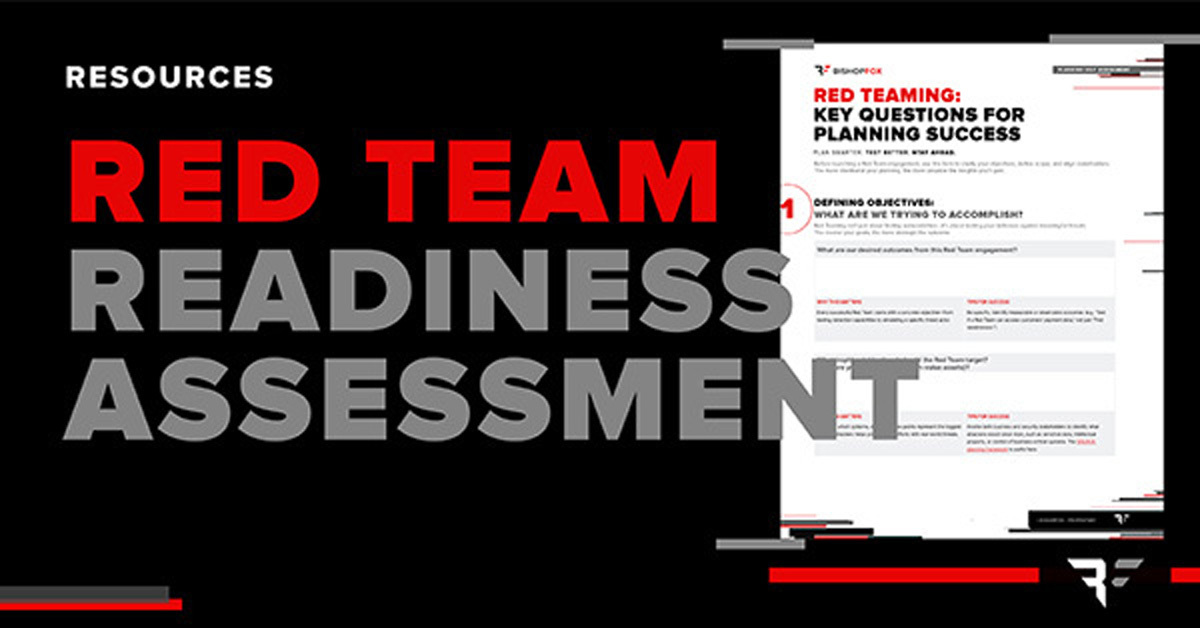The Top Reasons Security Leaders Choose Red Teaming

TL;DR: This blog explores why security leaders are turning to red teaming as a strategic tool to test defenses against real-world adversaries. Readers will learn how red teaming validates security investments, challenges assumptions, strengthens blue team performance, drives risk-informed decisions, and improves cross-team coordination.
Red teaming has become a go-to strategy for organizations aiming to test their defenses against advanced cyber adversaries. Done right, it helps answer high-stakes questions, challenge assumptions, and measure readiness in real-world conditions. Our experience shows red teaming is most valuable when tackling high-impact challenges traditional penetration testing can’t address.
What Is Red Teaming?
Red teaming is an end-to-end, objective-based adversary emulation designed to provide an understanding of how an organization's security program stands against sophisticated attacks. Its power lies in delivering irrefutable proof of security efficacy.
A Red Team engagement highlights two key components:
- Objective-Based: Instead of starting with a predefined scope like a network perimeter, red teaming begins with a specific attack objective. This could be anything from deleting a mortgage in our system, gaining access to all customer payment card information, stopping a train, or achieving physical access to the C-suite floor. The scope then flows naturally from this objective.
- Adversary Emulation: To achieve these goals, red teams meticulously emulate the motivations, capabilities, intent, and tactics, techniques, and procedures (TTPs) of real-world, modern adversaries who would genuinely seek to harm the organization.
Top Use Cases for Red Teaming
In our experience working with and in a wide range of organizations, from Fortune 100s to rapidly scaling startups, the following are the most common and high-value use cases for red teaming that we encounter:
1. Adapt & Strengthen from Adversity: Are Our Defenses Getting Smarter?
No red team engagement ends in perfection, and that’s where its value lies. Whether an attacker succeeds or is stopped mid-path, every engagement is an opportunity to learn and build resilience.
From containment strategies to escalation protocols, red teaming delivers a live simulation of how well your security program functions under fire. The most effective organizations use each engagement to build:
- Smarter defenses through better detection, response, and architectural tuning
- Sharper coordination between security, IT, and business stakeholders
- Organizational maturity through repeatable testing and continual process refinement
Pro Tip: Run a structured post-engagement debrief across red teams, blue teams, and executive leadership. Track improvements, breakdowns, and how your program is evolving. Adaptation is the ultimate goal.
2. Cybersecurity Investment & Control Validation: Is What We Built Actually Working?
Security leaders often invest heavily in tools, like EDR, SIEM, Zero Trust, or identity management systems, expecting them to defend against sophisticated threats. Red Teaming tests whether those controls are correctly implemented, detect attacks as expected, and trigger timely responses. It also uncovers integration blind spots and team breakdowns.
For new CISOs, Red Teaming provides an unfiltered baseline of inherited technologies and team performance under pressure.
Pro Tip: The best Red Teams don’t just find a way in, they map which layers failed, which controls performed, and where detection or escalation broke down. These insights help prioritize remediation and guide confident investment decisions.
3. Challenge Assumptions and Reveal Ground Truth: What If We’re Wrong About Our Security Controls?
Every organization operates with assumptions like:
- “Our EDR and SIEM catch all critical activity.”
- “MFA is enforced across every privileged account.”
- “Our incident response plan is solid because it’s documented.”
But assumptions are not evidence. Red Teaming challenges these beliefs under realistic conditions to expose the gap between what teams think is true and what’s actually defensible. Commonly uncovered issues include:
- Unmonitored DevOps pipelines
- Legacy systems with excessive privileges
- API misconfigurations that expand access
Pro Tip: Compare control claims with Red Team findings. The contrast builds a compelling case for operational changes and future investments.
4. Exercise Defenders: Are There Weaknesses in Our Blue Team?
Modern SOC teams face false positives, fragmented visibility, and alert fatigue. Red Teaming simulates realistic adversary behavior, providing defenders with authentic signals to detect, triage, and respond.
These scenarios reveal:
- Was the attack detected in time?
- Were alerts escalated appropriately?
- Which logs were missing or misconfigured?
- How well did the SOC contain and communicate?
Paired with purple teaming, defenders get a step-by-step breakdown to close gaps, fine-tune processes, and harden detection logic. This cycle accelerates maturity and fosters continuous improvement.
Pro Tip: Treat each engagement as training. Debrief with the Blue Team to reinforce detection logic, optimize playbooks, and benchmark performance.
5. Drive Risk-Informed Investments: Are We Aligning Budget with Real-World Risk?
Security leaders must prove that budgets reduce actual risk, not just check boxes. Red Teaming connects attack paths to business outcomes, illustrating, for example, how an attacker could move from a phishing email to financial data exfiltration, or escalate from a cloud misconfiguration to production system access.
These findings resonate in the boardroom by translating security issues into operational impact. Executives can see, for example:
- “This tool failed to detect credential harvesting.”
- “Our response team delayed escalation by 8 hours.”
- “Backup restoration wouldn’t contain ransomware propagation.”
Complementing red teaming with tabletop exercises lets executives experience response dynamics firsthand before a real incident forces the issue.
Pro Tip: Use reports as executive evidence. Tie findings directly to business continuity, regulatory risk (e.g. DORA, CISA), or operational KPIs to accelerate budget approvals.
6. Strengthen Cross-Team Coordination: Are We Ready to Respond Together?
Cybersecurity isn’t just a technical challenge; it’s an organizational one. Red teaming exposes cracks in communication, ownership, and decision-making, revealing whether teams know their roles in a coordinated response.
These engagements often uncover:
- Misaligned incident escalation between security and IT
- Confusion over executive notification or crisis communication
- Delays in legal or compliance decision-making
- Gaps in asset knowledge and recovery protocols
By simulating end-to-end attacks, red teaming creates a shared narrative that engages SOC analysts, engineers, legal, HR, and executives. Tabletop simulations extend this to business units, building a unified response capability.
Pro Tip: Use red team engagements to bridge silos. Pair technical simulations with tabletop exercises to align technical and business leaders.
What Critical Insights Will Red Teaming Uncover For You?
What Red Teaming uncovers is invaluable. It tests the full security environment of controls like people, processes, and technology. It assesses preventative controls (whether attacks are stopped or slowed) and detective controls (whether activity triggers alerts, reaches logging systems, and is analyzed correctly).
By simulating sophisticated threats, you gain clarity on true defense capabilities, move beyond assumptions, and translate findings into actionable business insights.
If you’re ready to explore how Red Teaming can help you, download our Red Team datasheet or get started with one of our experts for a tailored solution.
Subscribe to our blog
Be first to learn about latest tools, advisories, and findings.
Thank You! You have been subscribed.



